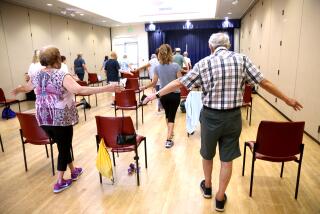A new biological clock measures altered DNA, not birthday candles
Move over birthday candles, and step aside telomeres; there may be a new kind of biological clock in town. And this one may prove useful in predicting where age-related diseases such as cancer are most likely to strike.
The proposed new body clock measures DNA methylation -- the process by which genes are altered as the body’s cells differentiate and their genetic programs change to meet new demands. Researchers pored over the DNA of some 8,000 samples from 51 different tissues and cells -- including blood, brain, muscle, heart, lungs, liver and pancreas -- to devise a formula by which DNA methylation could be used to determine the age of the tissue from which the tested cells are drawn.
The research, published Monday in the journal Genome Biology, makes clear that the answer to the question “how old is this person?” may change depending on which tissue is checked.
In a single individual, the “DNAm” ages of diverse tissues largely converge on one number. But certain tissues may diverge from the norm. By comparing a specific tissue’s “DNAm” age with the person’s chronological age -- or with the DNAm age suggested by the person’s other tissues -- physicians may one day be able to identify organs or tissues that are aging at an accelerated rate. That, in turn, may allow them to identify tissues that are vulnerable to abnormal processes such as cancer, or already under attack.
The author of the new research, UCLA bioinformatician Steve Horvath, found that a woman’s breast tissue routinely tests as being older than her chronological age by two to three years. That, the authors speculated, may help explain why breast cancer is the most common cancer affecting women. Looking at the methylation of cells taken from the breasts of women with breast cancer, Horvath observed that tissue near the site of a tumor was, on average, 12 years older by DNAm standards than the rest of her body.
By contrast, musculoskeletal tissue and cardiac muscle typically look younger on DNAm readings than their owner’s actual years -- owing, perhaps, to the rejuvenating effects of stem cells that remain relatively plentiful in those tissues through life, and come to the rescue whenever injury or disease set in.
The resulting “clock” also may one day offer scientists a way to measure whether anti-aging measures and regenerative medicine are delivering on their promise of turning back the hands of time.
Not surprisingly, embryonic stem cells or induced pluripotent stem cells -- adult cells that have been manipulated to revert to near-embryonic form -- were found to have an age of near zero as measured by this technique.
An exhaustive scan of the 121 sets of data on DNA methylation collected from patients both healthy and sick also showed that we age at different rates over our lifespans.
“The clock’s ticking rate isn’t constant,” Horvath said. “It ticks much faster when we’re born and growing from children into teenagers, then slows to a constant rate when we reach 20.”
Horvath said he aims to develop and extend his body clock technique by looking at whether measures that stop the body’s DNAm clock also stop the aging process, or whether doing so has negative effects. Meanwhile, UCLA has filed a provisional patent on Horvath’s DNAm bioticker.







